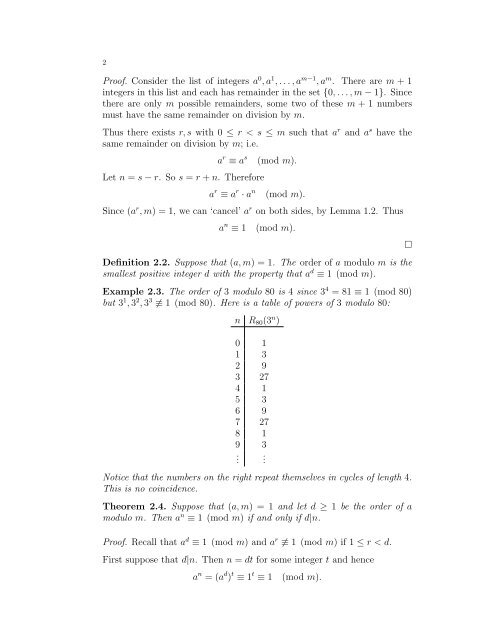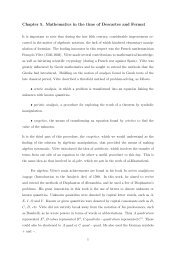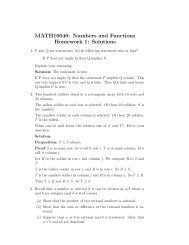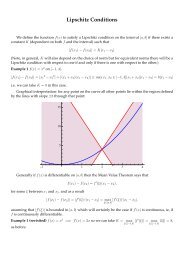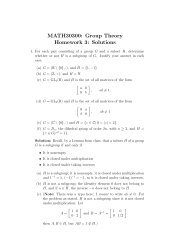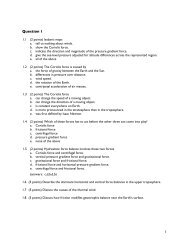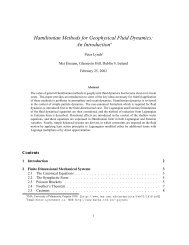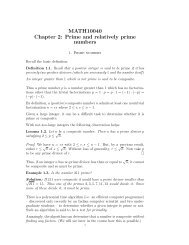MATH10040 Chapter 5: Fermat's 'Little' Theorem
MATH10040 Chapter 5: Fermat's 'Little' Theorem
MATH10040 Chapter 5: Fermat's 'Little' Theorem
Create successful ePaper yourself
Turn your PDF publications into a flip-book with our unique Google optimized e-Paper software.
2Proof. Consider the list of integers a 0 , a 1 , . . . , a m−1 , a m . There are m + 1integers in this list and each has remainder in the set {0, . . . , m − 1}. Sincethere are only m possible remainders, some two of these m + 1 numbersmust have the same remainder on division by m.Thus there exists r, s with 0 ≤ r < s ≤ m such that a r and a s have thesame remainder on division by m; i.e.a r ≡ a sLet n = s − r. So s = r + n. Thereforea r ≡ a r · a n(mod m).(mod m).Since (a r , m) = 1, we can ‘cancel’ a r on both sides, by Lemma 1.2. Thusa n ≡ 1(mod m).Definition 2.2. Suppose that (a, m) = 1. The order of a modulo m is thesmallest positive integer d with the property that a d ≡ 1 (mod m).Example 2.3. The order of 3 modulo 80 is 4 since 3 4 = 81 ≡ 1 (mod 80)but 3 1 , 3 2 , 3 3 ≢ 1 (mod 80). Here is a table of powers of 3 modulo 80:n R 80 (3 n )0 11 32 93 274 15 36 97 278 19 3.Notice that the numbers on the right repeat themselves in cycles of length 4.This is no coincidence.<strong>Theorem</strong> 2.4. Suppose that (a, m) = 1 and let d ≥ 1 be the order of amodulo m. Then a n ≡ 1 (mod m) if and only if d|n.Proof. Recall that a d ≡ 1 (mod m) and a r ≢ 1 (mod m) if 1 ≤ r < d.First suppose that d|n. Then n = dt for some integer t and hencea n = (a d ) t ≡ 1 t ≡ 1.(mod m).□


